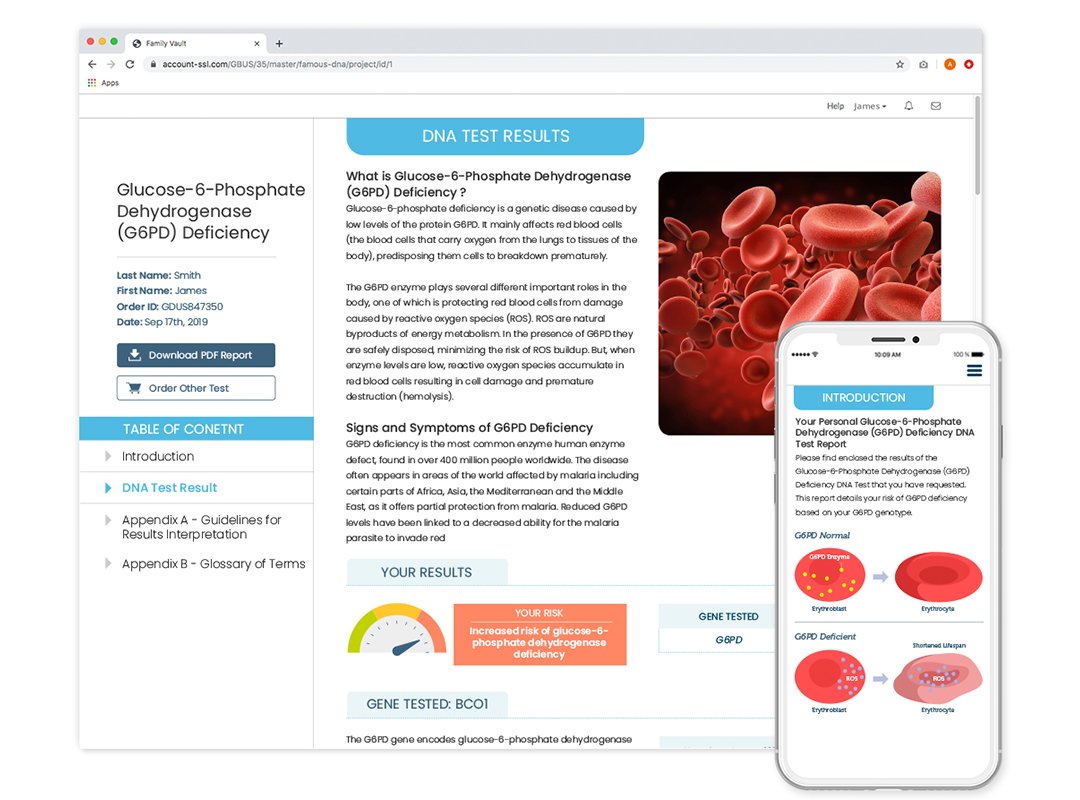Glucose-6-Phosphate Dehydrogenase Deficiency DNA Test
Are you at risk of glucose-6-phosphate dehydrogenase (G6PD) deficiency? Find out with this DNA Test.
- Detects one variant of the G6PD gene, which results in G6PD deficiency in individuals of African descent
- Early diagnosis is key to managing symptoms associated with the disease
- 100% private and confidential online results
Already have DNA markers? Sign in and upload your data to view results.
Need to take the DNA Test? Order our easy-to-use swab kit.





